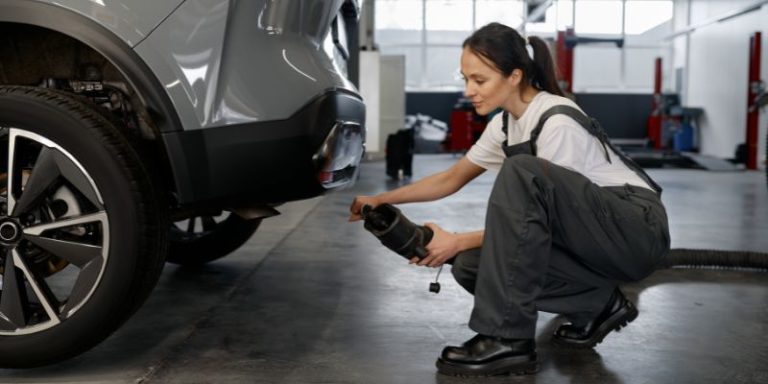Can a Cosigner Trade in a Car: A Step-by-Step Guide
Yes, a cosigner can trade in a car. If you cosigned a car loan but want to get rid of the vehicle, you have the option to trade it in.
As a cosigner, you have legal rights and can participate in the trade-in process just like the primary borrower. Trading in a car involves finding a dealership or a private seller willing to take the vehicle off your hands in exchange for credit towards a new car or cash.
However, it’s important to consider the loan balance and any potential negative equity on the existing car loan, as it may impact the trade-in value and the ability to secure financing on a new vehicle. By understanding the trade-in process and your rights as a cosigner, you can navigate the situation efficiently.
Understanding Cosigning For A Car Loan
Cosigning for a car loan can be a critical decision that can have a significant impact on both parties involved. Whether you are a friend or a family member considering cosigning for someone else’s car loan or you are the primary borrower seeking a cosigner, it is essential to understand the dynamics and responsibilities that come with this agreement.
What Is A Cosigner?
A cosigner is someone who agrees to take on the responsibility of a loan if the primary borrower fails to meet their financial obligations. In the context of a car loan, the cosigner acts as a guarantor, assuring the lender that the debt will be paid even if the borrower defaults on payments or encounters other financial hardships.
The Role Of A Cosigner In A Car Loan
When a lender requests a cosigner for a car loan, it’s usually an indication that the primary borrower may not have the creditworthiness or financial stability to obtain the loan on their own. The cosigner’s role is to strengthen the loan application by providing a solid credit history that convinces the lender of the borrower’s ability to repay the loan.
By having a cosigner, the primary borrower gains access to better loan terms, such as lower interest rates or higher loan amounts. Moreover, the cosigner can often enhance the chances of loan approval, especially if the borrower has a limited or damaged credit history.
It is important to note that, as a cosigner, you are assuming an equal responsibility for the loan. This means that if the primary borrower defaults or stops making payments, you will be legally held responsible for repaying the debt. Any missed or late payments will impact both parties’ credit scores, making it crucial for cosigners to be fully aware of the borrower’s financial situation and their ability to fulfill their obligations.
Remember, cosigning for a car loan should not be taken lightly. It’s essential to have a clear understanding of the borrower’s financial circumstances and trust in their ability to make timely payments. Open and honest communication between both parties is vital to ensure a successful partnership and avoid any potential conflicts in the future.
Trading In A Car With A Cosigner
Trading in a car can be an exciting opportunity to upgrade your ride or downsize to something more practical. However, when you have a cosigner on your loan, there are a few additional steps and considerations to keep in mind. In this article, we will guide you through the process of trading in a car with a cosigner, from reviewing your loan agreement to completing the trade-in process. Let’s dive in!
1. Review The Loan Agreement
Before embarking on the journey of trading in your car, it’s essential to review your loan agreement. Take the time to carefully study the terms and conditions of the loan, paying close attention to any clauses related to trading in the vehicle. Some loans may have specific provisions that require both the primary borrower and the cosigner to be present during the trade-in process.
2. Consult With The Cosigner
Once you’ve familiarized yourself with the loan agreement, it’s crucial to consult with your cosigner. Talk to them about your intention to trade in the car and discuss any concerns or obligations they may have. Open communication is key to ensuring a smooth process and maintaining a good relationship with your cosigner.
If the cosigner is unable to join you physically during the trade-in process, consider obtaining their electronic consent or having them write a letter stating their approval. Documentation is essential to protect all parties involved and satisfy any requirements set forth by the loan agreement.
3. Evaluate Trade-in Options
Before visiting a dealership, take the time to evaluate your trade-in options. Research current market values, compare offers from different dealerships, and determine the trade-in value of your car. Being well-informed will empower you to negotiate a fair deal and make a knowledgeable decision.
4. Preparation For Trading In The Car
When preparing to trade in your car, gather all the necessary documents and ensure they are up to date. This includes the title, registration, loan documents, and maintenance records. Having these documents readily available will make the process more efficient and prevent any delays.
In addition to the documents, perform a thorough cleaning of your vehicle, both inside and out. A clean car creates a positive impression and may increase its trade-in value. Remove personal belongings, vacuum the interior, and consider getting a professional detailing done to ensure your car looks its best.
5. Complete The Trade-in Process
Now that you have reviewed the loan agreement, consulted with your cosigner, evaluated trade-in options, and prepared your car, it’s time to complete the trade-in process. Schedule an appointment with the dealership of your choice and bring all the necessary documents with you.
During the process, be sure to inquire about the dealership’s procedures for trading in a car with a cosigner to ensure a smooth transaction. Once everything is finalized, carefully review the trade-in agreement, making sure all the details are accurate before signing.
Remember, trading in a car with a cosigner requires cooperation and communication. By following these steps and staying organized, you can navigate the trade-in process successfully and make a sound decision that aligns with your needs and goals.
Considerations And Potential Challenges
When it comes to trading in a car, having a cosigner can bring a set of unique considerations and potential challenges. Whether you are the primary owner of the vehicle or the cosigner, it’s important to understand the implications of a trade-in and how it may affect both parties involved.
Cosigner’s Consent And Involvement
Before proceeding with a car trade-in, it is crucial to obtain the cosigner’s consent and involvement in the process. Since the cosigner shares financial responsibility for the loan, their agreement is required to make any changes to the existing financing agreement.
It is recommended that both the primary owner and the cosigner communicate and mutually agree upon the decision to trade in the car. Open and transparent communication ensures that all parties are on the same page and can move forward confidently.
Impact On Credit Scores
Trading in a car with a cosigner may have implications on both parties’ credit scores. The primary owner and the cosigner must be aware that the trade-in will be reflected on their credit reports, potentially affecting their creditworthiness in the future.
It is important to note that if the primary owner and the cosigner have been making timely payments on the loan, the impact on their credit scores may be minimal. However, if there have been missed payments or late payments, trading in the car could worsen their credit profiles.
Ownership And Title Transfer
When a car is traded in, the ownership and title transfer must be properly handled. Both the primary owner and the cosigner should coordinate with the dealership or lender to ensure that the necessary paperwork is completed accurately.
The primary owner will typically sign the title over to the dealership or lender, who will then provide the necessary documentation for the new vehicle. If the cosigner is also listed on the title, their involvement in the transfer process may be required as well.
Remaining Loan Balance
One of the significant factors to consider when trading in a car with a cosigner is the remaining loan balance. If there is an outstanding amount on the loan, this amount must be taken into account during the trade-in process.
The dealership or lender will assess the trade-in value of the car and calculate how it can be applied towards the remaining loan balance. It is important for both the primary owner and the cosigner to be aware of any potential shortfall or surplus resulting from the trade-in.
In some cases, the cosigner may be required to co-sign the new loan if the trade-in value is not sufficient to cover the outstanding balance. Understanding the financial implications and discussing potential options with the lender is crucial at this stage.
Discussing The Trade-in With The Lender
Prior to proceeding with the car trade-in, it is recommended to have a conversation with the lender to discuss the specific details and potential challenges that may arise. This will ensure that both the primary owner and the cosigner are well-informed and prepared for any possible outcomes.
By addressing these considerations and potential challenges, the primary owner and the cosigner can navigate the car trade-in process smoothly and reach a mutually beneficial agreement.
Conclusion
To sum it up, a cosigner’s ability to trade in a car largely depends on the agreement they have with the primary borrower. It’s crucial to review the terms of the loan, consider the financial implications, and communicate openly with all parties involved.
By following these steps and seeking professional advice if needed, cosigners can navigate the complexities of trading in a car successfully. Protect your financial interests and make informed decisions when it comes to cosigning responsibilities.







